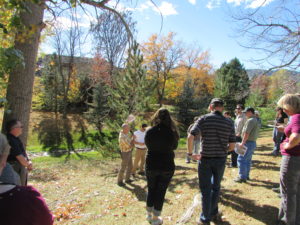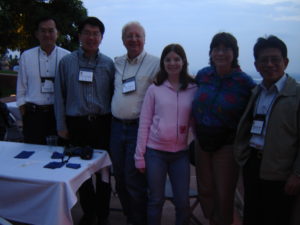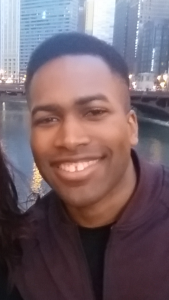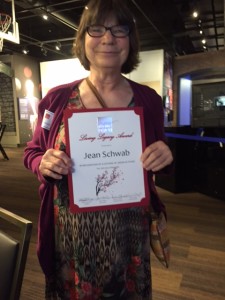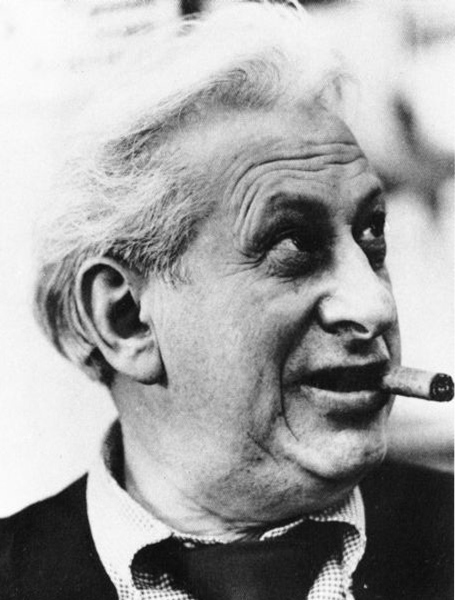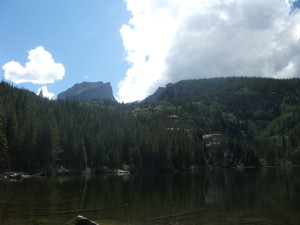For those who have noticed, it has been more than five weeks since I last posted to this blog. It has been a rough stretch, but it could have been much rougher. At least to my knowledge, I never have contracted COVID-19. Not that people weren’t asking, especially relatives.
There were the holidays, of course, and who wouldn’t take it easy for at least a few days?
Then came the call on Christmas Eve, around 8 p.m. CST. It was my younger sister, choked up, reporting that our mother had died about an hour earlier at 8 p.m. EST. It was not entirely unexpected. She was living in a small nursing facility near Cleveland. My younger sister and brother live nearby. At 103, our mother had lived a very long life, overcoming more obstacles and health threats than I could imagine, but time takes its toll on all of us. In her last few days, she could barely speak, was on oxygen, and finally on morphine as hospice nurses took charge of her situation.
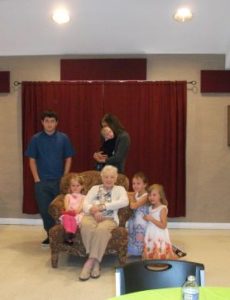
My mother, Hazel, at 100th birthday in 2017.
Still, Christmas Eve is not an ideal time for such news. It completely dampened the tenor of the evening at our house, as I shared the news first with my wife, and then with six grandchildren who were present. We all went to sleep that night knowing that my mother, who survived our father by more than 13 years, would no longer be a presence in our lives, though she would certainly be a memory. Losing a parent is almost always a tectonic shift in one’s life. Losing a parent in the midst of a pandemic, even if not to the pandemic, adds an extra element of sadness to the event. Funerals have become small events since last March. There is no need to add to the death toll.
We celebrated a slightly subdued Christmas, but we wanted to maintain the joy for the grandchildren, who range from 6 to 17, and their mothers. There was a more than ample dinner, much of it planned before the news arrived, and the kids played with their new gifts. Nonetheless, two of them, Alex, 11, and Angel, just two days away from his 17th birthday, made clear they wanted to come with Jean and me to Cleveland for their great-grandmother’s funeral. That was already a full load for our 2018 Chevy Malibu.
Christmas, of course, was on Friday, which meant that my siblings in Cleveland would not meet with the funeral home staff until Saturday to settle on plans. Over the weekend, they learned that, because of COVID-19, the funeral home was backed up, and the funeral could not occur until Tuesday, December 29. Their pastor had another funeral Tuesday morning, so he could not arrive until later, so, while visitation was permitted to begin at 11:30 a.m., the service began around 1:15 p.m. Pastor Brad Ross, of Triune Lutheran Church in Broadview Heights, Ohio, kept it reasonably short out of necessity. The cemetery was also backed up, and we would need to complete the interment service no later than 3 p.m. That meant we were all leaving the funeral home no later than 2 p.m. This was a very different environment from the more relaxed and expansive schedule that accompanied my father’s funeral on a sunny May day in 2007. The last pandemic that had ever ravaged the world on the scale of COVID-19 had occurred in 1918 and 1919, just a year or so after my mother was born. I kept thinking of all the changes she had seen in her lifetime, but they were often hard to imagine. The best I could do was try to broaden the lens of my own 71 years, but it never seemed like enough. Cars were new on the city streets when she was born, and she graduated from high school during the Great Depression. Our nation was already sending men into space while I was still in elementary school. We can imagine, but can we relate?
My niece from upstate New York, Cheryl, provided the one family contribution to the service, which was otherwise a short homily and some scriptural readings from Pastor Ross. Cheryl has a beautiful voice. With instrumental accompaniment from a recording, she sang “The Old Rugged Cross.”
Through it all, and it was brief, I had flashbacks to moments of both separation and engagement with my parents, particularly my mother. I was always well aware that she was less than pleased when I said I was moving to Iowa in January 1979, at age 29 taking the helm of a small nonprofit public interest advocacy organization. In her mind, such a move could be justified if I were working for some large firm that wanted to transfer me there, but the type of job I had sought was, in her mind, a waste of time and talent. I stood my ground because I knew already that I was profoundly restless in Cleveland, striving to redefine myself and find a new role in life, and this modestly paid position posed a challenge to my intellect, my moral fiber, and my emerging sense of identity. I was a “child of the Sixties” who believed passionately in positive social and political change, but it was more than that.
Even while in Cleveland, I had often written and spoken in ways that revealed some innate, but not yet well-developed, skills at communication. I had published several op-eds in The Plain Dealer, Cleveland’s major daily newspaper. But I did not feel that anything I was doing was plumbing the depths of my skills and beliefs, so it was time to move on and immerse myself in an entirely new environment. Had I been more daring, I might have joined the Peace Corps, like my long-time college friend, Jim Quigley, who spent two years in the Marshall Islands. That surely would have driven my mother over the edge. “Why do you want to do that?” would have been her first question.
Within three years, I shifted gears in Iowa to become a graduate student at the University of Iowa, pursuing two Master’s degrees in urban and regional planning and journalism that have become the cornerstones of my career for four decades. She first greeted that, too, with some skepticism, wondering why I wanted to “struggle” for a few more years like that, but she acquiesced. She had no choice because it was all on my own dime or with my own student loans. To be fair, however, I must emphasize that both my parents strongly encouraged all of us to attend college.
She may also have feared that I would never return to Cleveland. I visited often, but she was right. Cleveland no longer held much allure. In the end, with Jean, who was from Omaha, I ended up in Chicago. Life offered a far bigger palette here on which to paint my career.
A long-time high school friend of mine who also now lives in Chicago, Larry Barr, theorized recently that middle-class parents of our generation—and my parents were blue-collar middle-class—tended to want success for their children through conventional careers. Getting hired by a big company was a sign of economic security. Many of us Baby Boomers had a more creative streak and wanted to discover who we were. That made our parents nervous about our prospects in life. My extended search stretched into three and a half years of graduate school because I used the journalism training to refine what I had always sensed were powerful writing skills that had not yet been refined and tested, and I wanted to push the development of those skills as hard as I could while also refining a clearer sense of my own values in life. I emerged from the University of Iowa, not a different person, but a far more mature and determined person than when I started. In the years that followed, I turned a Master’s Project in Journalism into my first published book, followed by book tours and a review in the New York Times. I was far more confident than when I had enrolled, and my vision of what was possible grew exponentially.
That was the point, Larry suggested in a recent conversation. Skeptical at first of such personal searches for self-definition and meaning, our parents could nonetheless embrace success when it was staring them in the face. The kid is getting published. He’s an author, and a planner. He must have known what he was doing.
A few years later, a second book emerged, my role at APA had grown, and things just kept evolving. During one visit to Cleveland, they listened as I was interviewed with another panelist on the local NPR station. Not everybody’s kid gets such positive public attention. They reported enjoying the discussion.
There was no denying that, whatever differences of opinion we still had—and there were plenty—I seemed to have planted my stake in the world. I might not have become an automotive engineer for Ford or GM, but their doubts had been resolved. (My father would love to have been trained as an engineer, but college seemed out of reach in his youth, which is sad. He had some amazing mathematical and mechanical skills, and the world would have benefited from providing him such an opportunity. He worked as a truck mechanic in a chemical plant, but was a beacon of stability throughout his life.)
Those are the essential reminiscences after all these years, and they all passed through my mind during the funeral. I was a pallbearer and took my place in the procession with nephews and my brother, but before we left, I asked for a moment to grab my overcoat, as I was feeling a bit cold. We loaded the casket into the hearse, and our parade of cars followed to the cemetery.
It was about 23°F., a damp, chilly day as we reached the cemetery in Hinckley, about a 20-minute drive from the funeral parlor. I was not especially comfortable as we brought the casket to the burial site and listened as the pastor intoned a final prayer before we all left, most of us for my brother Jack’s house, where he and my sister-in-law, Tina, had a casual dinner of sandwiches and pasta salads ready for all of us. They also had a small cake for a joint birthday: Mine had been on December 20, and my other sister, Nancy, who lives in Pennsylvania, was born on New Year’s Eve.
I struggled to enjoy it all, but it soon became apparent to everyone—most notably, Tina and Jean—that something was wrong. I was looking pale, feeling cold, and lacking energy. I sat near the fireplace and simply watched a movie, The Princess Bride, that was on the living room television. It was still early in the evening when we left for our hotel room with Angel and Alex, and I fell asleep beneath the covers not long after 8 p.m., a remarkably early time for me. There was by then no question that I was ill.
The hotel, relatively empty and operating post-holidays in pandemic mode, offered a simple complimentary breakfast of either a bagel with cheese, egg, and sausage, or without the sausage, and orange juice in a small plastic bottle. The dining area had been closed months ago. Amenities were minimal. Alex went to the lobby to get the breakfast for all of us, but I passed on the bagel and simply drank the orange juice because I was feeling queasy. Even that proved a big mistake. By the time we had packed the car and checked out, I was getting nauseous. As Jean, who had committed to driving the entire trip without my help, pulled out of our parking space, I said urgently, “Pull up to the front door.” She looked puzzled, and I repeated, more firmly, “Pull up to the front door!” She did so, and in a moment, I was racing for a bathroom, and the orange juice departed my stomach like a liquid missile. Now I knew I was in trouble, and a six-hour drive down the Ohio and Indiana Turnpikes, plus I-90 in Chicago, lay ahead.
On the way home, we discussed what to do about my situation when we got there. I avoided both food and drink the entire time in order not to test my stomach. If it was empty, there would be no emergency. I was decidedly uncomfortable when we visited service plazas to use the bathroom because the weather was at first rainy and cold, though it improved in Indiana. I used her cell phone to call an urgent care center near our home and was told that, unless I needed a COVID test, I could be treated as a walk-in.
In Chicago, however, I discovered that one needed to get the attention of someone inside the urgent care center for someone to come to the door to let you in, and two ladies standing outside indicated they had been waiting a half hour for someone to respond. I said I would become a wreck if I stood outside that long, so I drove home.
After I rested a bit and warmed up, Jean took me to the emergency room at nearby St. Mary’s Hospital. I expected that they would test me immediately for COVID-19, as they had done last May, but to my surprise, the admitting clerk simply asked about symptoms and referred me to a nurse. Within minutes, I was in a treatment room with a doctor. No COVID test ever happened. Dr. Jorgensen ascertained instead that I had a viral sinus infection. Because the infection was viral, not bacterial, they could not administer antibiotics but would have to let me wait it out, while advising that I continue using Flonase to clear the sinuses and Tylenol for headaches or fever. He prescribed Zofran for the nausea, which I used for maybe two days before that symptom disappeared. An attending nurse attached saline fluids intravenously to relieve dehydration that, no doubt, had materialized from my precaution in not eating or drinking during the trip. “We’re putting the fluids where they matter without testing your stomach,” he assured me.
I spent the New Year’s weekend either in bed or lazily reading newspapers and books until I got drowsy. My siblings and in-laws were calling and texting to find out how I was doing, and to make sure I had not contracted coronavirus. I reassured everyone that no such diagnosis was in the works, but some worried anyway. You never know, and we all know someone who has suffered, and one illness can lead to another. But in my case, it did not.
What it led to is my current anxiety. Work piled up as the first week of January rolled on and I struggled to regain my normal energy level, which happened but far too slowly for my satisfaction. I never lost my sense of taste or smell, a key COVID trait, and when feeling energetic enough, I continued to craft some wonderful meals as my inner chef, another part of my creative identity, reasserted itself. Lord, I would hate to discover someday that ginger/sesame-marinated salmon tasted like paste or wallpaper!
By January 6, I was more or less back to work, albeit at a slow pace. Then came another opportunity to feel sick, but the symptoms were emotional and were triggered by the President himself, inciting an angry, deluded crowd of supporters to attack the nation’s Capitol, killing a Capitol police officer, and creating a new day that will live in infamy, alongside Pearl Harbor and the 9/11 attack on the World Trade Center and the Pentagon. That some Americans were proudly doing this to their own country was by far the worst part. I found the news consuming what little free time I had mustered by then. Emotionally, it felt like collateral damage to a political system gone badly awry.
By Friday, a new disturbance arrived, though I was able to take it more in stride. I received a notice from the Illinois Department of Employment Security (IDES) that an unemployment claim was filed in my name at a local sheet metal manufacturer, where, of course, I had never worked. It was clearly a fraudulent claim and was followed the next day by a benefits debit card from a bank in Cleveland. I spent Monday of this week requesting cancellation of the claim at IDES, taking other protective measures, and filing a financial fraud report with the Chicago Police Department. I do not believe in letting this activity go unreported. Providing evidence may add ever so slightly to a case against some perpetrator somewhere who needs to be brought to justice. I learned that IDES had been hacked in 2017. If so, although it happened under a prior administration, Gov. J.B. Pritzker needs to take ownership of the solution. Too many such issues in Illinois linger from one administration to the next, with computer systems not updated, problems not fixed, issues unresolved. The avalanche of claims under the current pandemic-caused recession has only exposed existing vulnerabilities. It is time for states and the federal government to get serious about addressing these challenges.
As for me, I am feeling better and getting more done every day, though I am still checking in with doctors in the near term. As for the nation, I hope we can all feel better after January 20, but I don’t envy President-elect Biden or his administration for the work that lies ahead. We have a viral infection in the body politic for which the only vaccines are truth, respect, and common sense.
Jim Schwab



